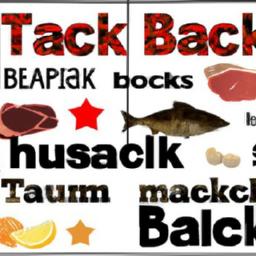A-B C-D E-F G-H I-J K-L O-P Q-R S-T U-V W-X Y-Z

Mastering Culinary Ingredients and Techniques: Essential Terms From ‘M’
Macadamia Nuts: The Australian Treasure
Originating from an evergreen tree native to Australia, macadamia nuts resemble small marbles and are prized for their rich, buttery, and mildly sweet flavor profile. Their exceptionally hard shells mean they are typically sold shelled, either raw or roasted. Also known as Queensland nuts, macadamias boast a particularly high fat composition, contributing to their creamy texture and indulgent taste.
Macaroni: Versatile Pasta Varieties
Macaroni refers to dried pasta crafted from wheat flour mixed with water. In the United States, the term typically denotes small, curved tubular shapes-commonly called elbow macaroni-frequently incorporated in dishes like macaroni and cheese or pasta salads.
Marshmallow: From Plant to Confection
Originally inspired by the marshmallow plant, known for its sweet-tasting root, the term now primarily denotes a spongy, sweet treat made from whipped egg whites, corn syrup, and stabilizers such as gum arabic or gelatin. This candy, shaped into soft pillows, is a favorite ingredient in hot cocoa and s’mores.
Understanding Madeira Wine
Madeira is a fortified white wine from Portugal, reminiscent of sherry, produced using Malmsey, Boal, Sercial, or Verdelho grapes. Its unique aging process involves the solera system and maturation in special heated rooms called estufas, where the wine ‘bakes’ inside its barrels. This technique imparts caramelized and nutty notes, making Madeira a celebrated choice for cooking and sipping alike. Recent demand spikes highlight its versatility in gastronomy and mixology.
Mandoline: Precision Slicing Tool
The mandoline is a manual kitchen slicer equipped with adjustable blades designed to create uniform cuts, whether slices, julienne strips, or waffle shapes. Its sleek, rectangular frame holds the blade firmly, allowing cooks to produce consistent cuts efficiently-ideal for salads, garnishes, or vegetable preparations that require finesse.
Marjoram: A Mediterranean Herbal Delight
Marjoram is a Mediterranean herb within the mint family, characterized by its pale green, oval leaves and a gentle sweetness that blends elements of thyme and oregano. With a fragrant aroma and subtle flavor, it’s frequently utilized in seasoning roasted meats, soups, and vegetable blends, elevating dishes with its nuanced herbaceous touch.
Marinating: Unlocking Flavor and Tenderness
Marinades are flavorful liquids that often combine acidic components (like vinegar, wine, or citrus juice) with herbs and spices, in which raw proteins or vegetables are soaked. This process not only infuses the ingredients with enriched flavors but also enhances texture by breaking down tough fibers. Modern culinary trends have embraced marinades tailored with global spices for fusion recipes, reflecting a broader palette.
Marzipan: Almond-Based Sweet Artistry
Composed of finely ground almonds, sugar, and egg whites, marzipan is a pliable confection often colored and molded into intricate figures or used as decorative cake coverings. Its versatility is showcased across European festive traditions, where it can serve as both a decorative masterpiece and a delicious filling.
Mise en Place: The Foundation of Efficient Cooking
Translating to “putting in place,” Mise en Place represents the professional chef’s method of organizing all ingredients and tools before cooking begins. This practice enhances efficiency, reduces errors, and supports a seamless cooking process-principles widely adopted in both home and commercial kitchens aiming for gourmet precision.
Mozzarella Cheese: From Italy to Global Tables
Originating as a silky pasta filata cheese from Southern Italy, mozzarella is traditionally made from water buffalo milk, although cow’s milk versions dominate today, especially in North America. Known for its mild flavor, creamy texture, and excellent meltability, mozzarella plays a central role in iconic dishes like pizza and caprese salads. Its increasing popularity is reflected in the global cheese market’s steady growth, driven by consumer demand for fresh, artisanal cheeses.
Molasses: The Sweet Byproduct with Depth
Molasses, a thick, dark syrup produced during sugar refining, brings a rich, slightly bittersweet flavor to baked goods, marinades, and barbecue sauces. Blackstrap molasses, a more concentrated version obtained after multiple boils, offers a robust taste and is valued for its mineral content, including iron and calcium, making it both a flavorful and nutritious ingredient.
Marbling: The Art of Perfect Meat Quality
Marbling refers to the fine streaks of fat interspersed within muscle tissue, a visual indicator of meat quality. This intramuscular fat boosts flavor, enhances juiciness, and tenderizes tougher cuts during cooking. For instance, premium-grade beef, such as USDA Prime, is characterized by abundant marbling, which contributes to its richness and superior eating experience.
Meringue: From Soft Peaks to Crisp Shells
Meringue is crafted by vigorously beating egg whites with sugar until glossy, stiff peaks form. Depending on sugar content and baking time, it can range from soft and fluffy toppings for pies to crisp, airy cookies known as pavlovas or kisses. In 2023, innovations in vegan meringue alternatives increasingly utilize aquafaba, the liquid from chickpeas, reflecting growing plant-based cooking trends.
Mason Jar: Versatile Food Storage and Preservation
Named after its inventor, the Mason jar features a glass body combined with a threaded lid and rubber seal to create an airtight environment, perfect for food preserving. Beyond canning, these jars have found new life as trendy vessels for salads, desserts, and drinks, becoming staple items in modern culinary presentations.
Monterey Jack Cheese: Melting into American Cuisine
Monterey Jack, an American semi-soft cheese originating in California, is made from cow’s milk with a mild taste and pale ivory color. Its smooth texture and ability to melt quickly make it a favorite in dishes like quesadillas and burgers. Varieties infused with herbs, peppers, or spices have expanded its appeal in contemporary cooking.
Minestrone Soup: Hearty Italian Tradition
Minestrone translates as “big soup,” a hearty mixture primarily featuring vegetables along with beans, pasta, or rice. This flexible dish varies by region and season, often enhanced with aromatic herbs like sage or basil. Its enduring popularity lies in its nutritious profile and adaptability to local produce, supporting sustainable culinary practices.
Mustard Varieties: From Seeds to Condiments
Mustard seeds come in colors ranging from white to black, each bearing distinct heat levels and flavors. From finely powdered dry mustard, used as a spice, to whole grain mustard with its coarse texture and earthy taste, American prepared mustard blends yellow mustard seeds, vinegar, and turmeric to deliver a smooth, mild condiment often dubbed “ballpark mustard.”
Muffins: A Spectrum of Styles
‘Muffin’ encompasses a variety of baked goods: from tender quick breads, usually packed with fruits or nuts in cup-shaped pans, to the English muffin, a yeast-leavened flatbread cooked on a griddle. The diversity of muffins continues to evolve, with gluten-free and vegan versions gaining market share in recent years.
Molecular Approach: Moist-Heat Cooking Techniques
Methods like steaming, simmering, poaching, and boiling rely on moisture to transfer heat delicately through foods, preserving flavor and tenderness. For example, steaming vegetables retains more nutrients compared to boiling. These techniques represent foundational skills in enhancing natural ingredients’ tastes while minimizing nutrient loss.
Mustard Greens: Peppery Leafy Delicacies
Known for their peppery, pungent flavor, mustard greens are the large, dark leaves of the mustard plant. Widely used in Southern U.S., Asian, and Mediterranean cuisines, they provide a complex bite when sautéed, pickled, or incorporated into stews. Nutritionally dense, mustard greens offer vitamins A, C, and K along with antioxidants.
Mulled Beverages: Warm Spiced Comfort
Mulling involves gently heating drinks like wine, cider, or beer with spices, fruit, and sweeteners to create comforting seasonal beverages. For example, mulled cider combines apple cider with cinnamon, cloves, allspice, and dried apple slices to evoke cozy autumn flavors-a tradition increasingly popular in festive settings worldwide.
Menu Essential: Marinating and Flavor Marriage
The culinary art of ‘marrying’ ingredients-or blending complementary flavors, aromas, and textures-creates balanced and compelling dishes. Similarly, pairing food with appropriate wines enhances dining experiences. For instance, a crisp Sauvignon Blanc can elevate the herbaceous notes of a fresh salad, illustrating harmonious flavor marriage.



